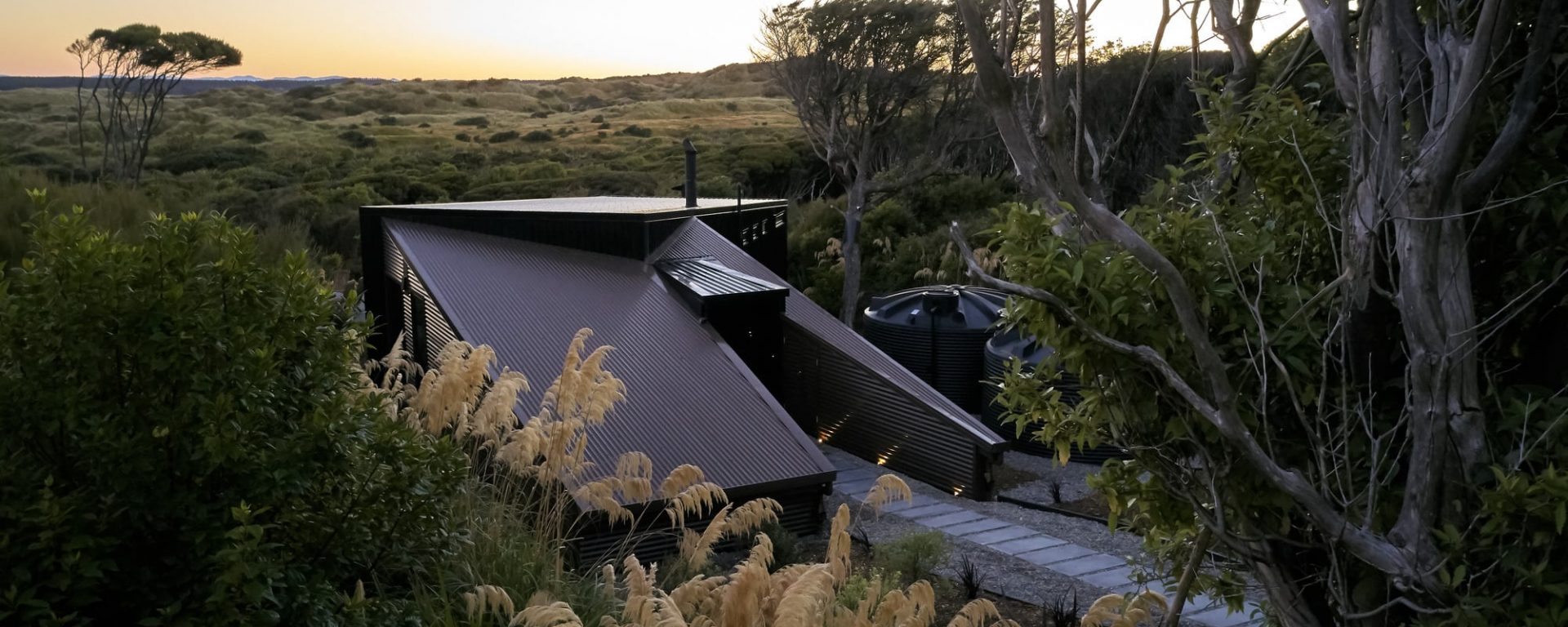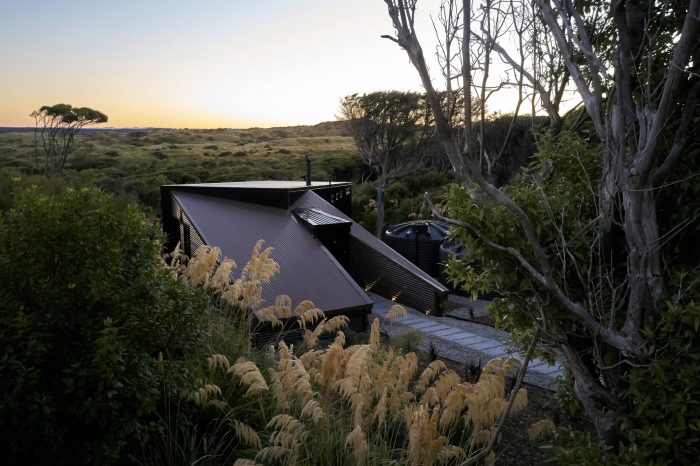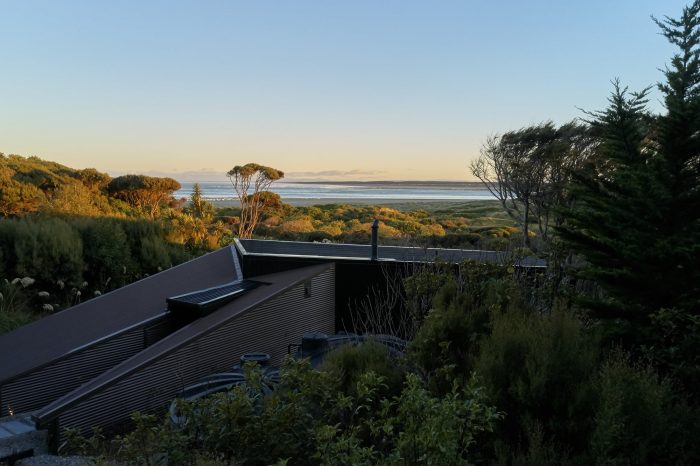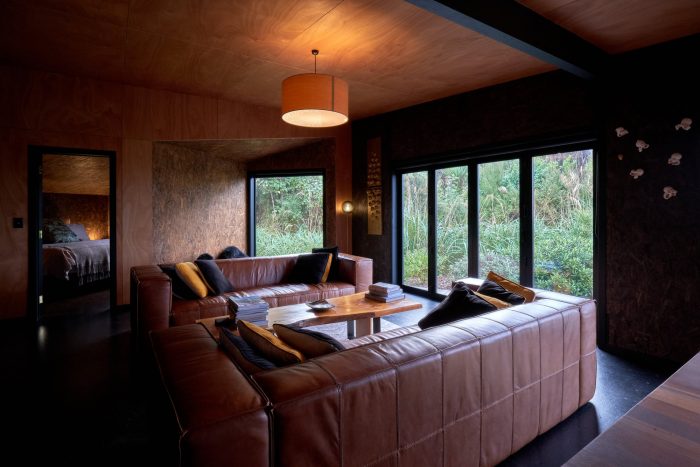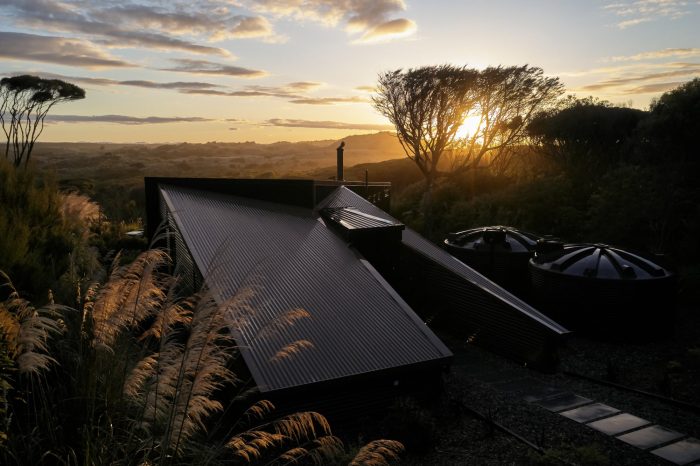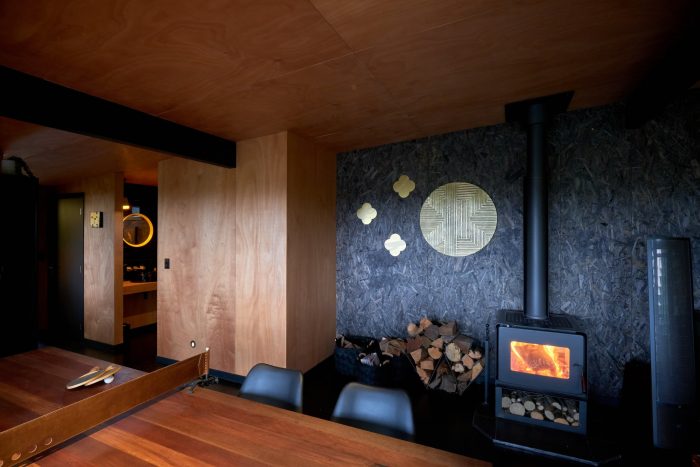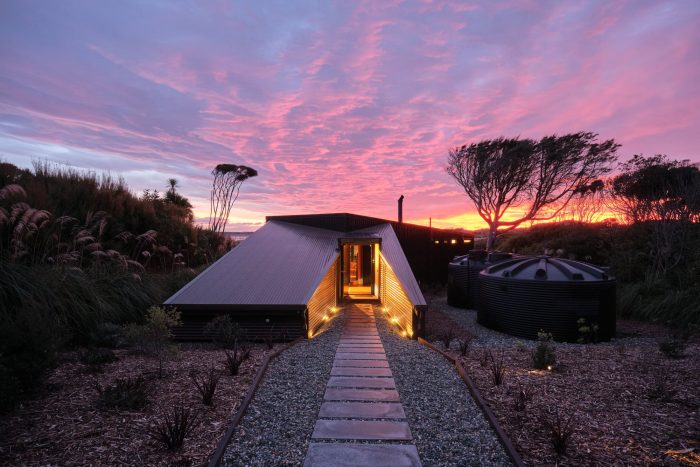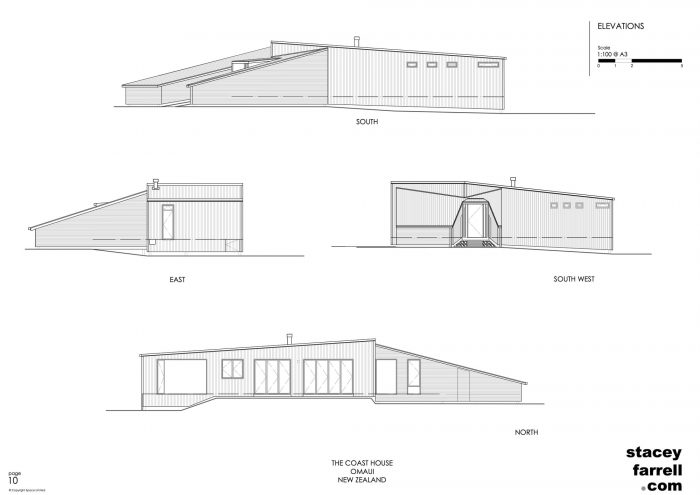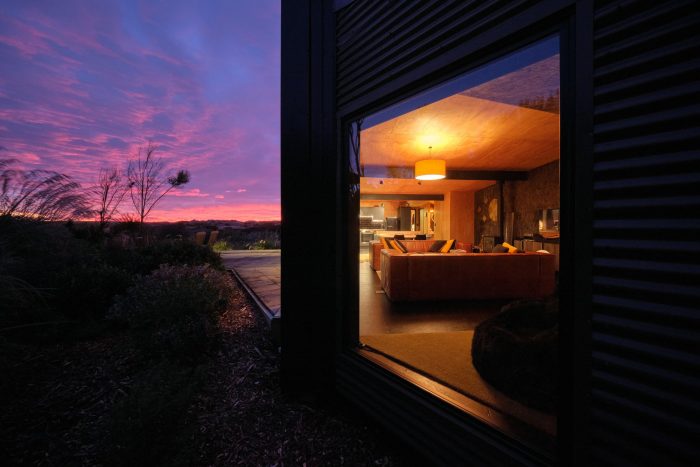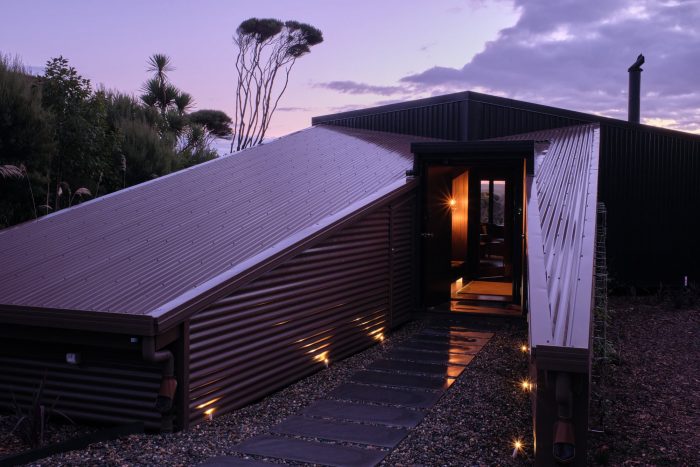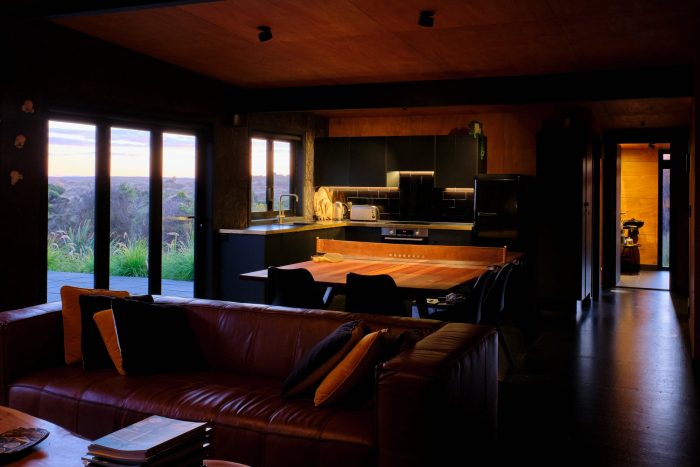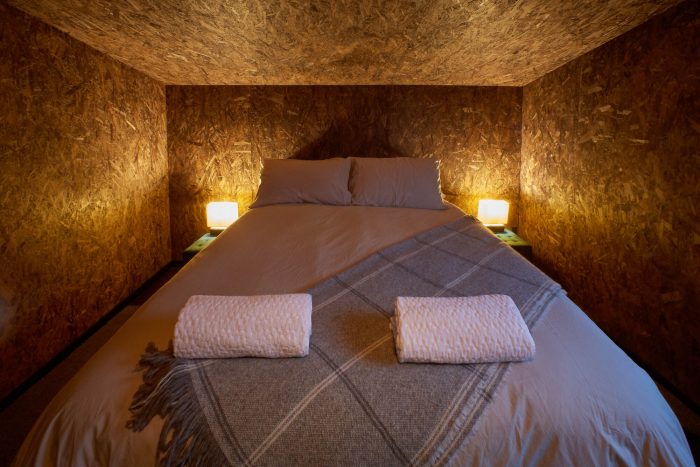我们的任务是在很小的预算范围内,最大限度地利用一个拥有海岸景观和大量野生动物的农村场地。随着业主在该地露营,了解它,爬上树,从未来的楼层看风景,设计在这几年里不断发展。客户希望有一个离散的隐居地,感觉舒适而豪华。住宅必须是低能源使用和低维护的,其覆层支持水收集。当业主不在的时候,房子必须能够被锁住和离开,并由其他人使用。住宅应该是低影响的,并且在海平面上升时可以重新安置。
The brief was to make the most of a rural site with coastal views and an abundance of wildlife…on a very small budget. The design evolved over the years as the owners camped on the site to get to know it, climbing trees to views from future floor levels. The clients wanted a discrete hideaway retreat that felt cozy and luxurious. The home had to be low energy use and low maintenance with cladding to support water collection. The home had to be able to be locked and left and used by others when the owners weren’t there. The home should be low impact and relocatable should sea levels rise.
设计方案。这座房子被设计成隐蔽的,蜷缩在恶劣的南方环境中。景观被赋予了优先权。材料和颜色都刻意减少,以避免与景观竞争。你通过一个诱人的受保护的入口进入海岸之家,这个入口是由棕色波纹板包裹的地面形式雕刻而成的。这种形式在一侧提供了一个木屋,在另一侧提供了储藏室。这个入口是为本地的攀缘植物铺设的线路,最终会爬过它并将其隐藏起来,使它看起来像是从地下长出来的。
The Design Solution. This house was designed to hide discretely, hunker down into its harsh southerly environs. The landscape was given priority. Materials and colors are deliberately pared back so as not to compete or the landscape. You enter The Coast House through an inviting protected entry carved out of the grounded form clad in brown corrugate. This form provides a woodshed on one side and storage on the other. This entry is wired for native climbers to eventually climb over and hide it, making it appear to grow out of the ground.
从压缩的入口处开始,房子向外打开,一进门就向上,面向阳光、视野和热量的获取。较高的黑色包层形式向海岸开放,容纳了生活区和另一个卧室。你可以从这些空间走出来,到一个天井里看鸟,欣赏海洋景观。材料是原始的,内部也是剥离的。我们没有在SIPs墙板上涂抹颜色,而是用它们的纹理来增加丰富性和小屋的感觉。衬板被用来将内部材料的调色板减少到2种,与2种外部覆层材料相匹配。入口处提供了一个气闸,以保持热量,并提供空间让人们脱下外套和鞋子,在里面寻求庇护。它还为业主提供了 “上锁后离开 “的柜子。
From the compressed entry, the house opens outward and upward once inside, oriented for sun, views, and heat gain. The taller black-clad form opens to the coast, housing the living areas and another bedroom. You flow out of these spaces to a patio to bird-watch and take in the ocean views. Materials are raw and stripped back internally. Rather than overlining the SIPs wall panels, we have stained them and worked with their texture to add a richness and a lodge-like feel. Ply linings were used to reduce the palette of internal materials to 2, matching the 2 external cladding materials. The entry provides an airlock to retain heat and give space to shed coats and shoes and seek refuge inside. It also discretely has the ‘lock and leave’ cupboards for owners.
材料。被动房的思想和施工方法使用了SIPs,减少了对房屋加热的依赖。水管和电气装置不在建筑围护墙上,以减少热量损失。在驱动的木桩上建造绝缘木地板,意味着如果海平面上升,房屋可以移动。这也大大减少了土方工程,使之轻而易举地接触到大地。低影响的景观设计留下了可渗透的区域,包括停车场和车道。混凝土铺面意味着不需要持续的甲板染色和维护。彩色涂层钢包层需要最少的维护,并适合水的收集。
Materials. Passive House ideology and construction methods used SIPs, reducing reliance on heating the home. Plumbing and electrical fittings are not on building envelope walls to reduce heat loss. Constructed with an insulated timber floor on driven timber piles meant that the home can be moved if sea levels rise. This also reduced earthworks significantly to touching the earth lightly. Low impact landscape design left areas permeable, including the parking and driveway. Concrete pavers meant no need for ongoing deck staining and maintenance. Color-coated steel cladding requires minimal maintenance and is suitable for water collection.
克服的挑战。最初的定价意味着我必须从项目中减去一大笔钱,否则就不建。这意味着要重新考虑包层,拆除一个露台,重新考虑将另一个露台变成天井,并将太阳能和电池备用电源重新分配给以后使用。
Challenges Overcame. Initial pricing meant I had to shave a hefty amount off the project or not build. This meant a reconsideration of cladding, removal of a deck and rethinking another deck to become a patio, and reallocating the solar and battery backup power for later.
Architects: Stacey Farrell Architect
Area : 97 m²
Year : 2021
Photographs :Ben Ruffell
Lead Architect : Stacey Farrell
Site Area : 911 m2
City : Omaui
Country : New Zealand

